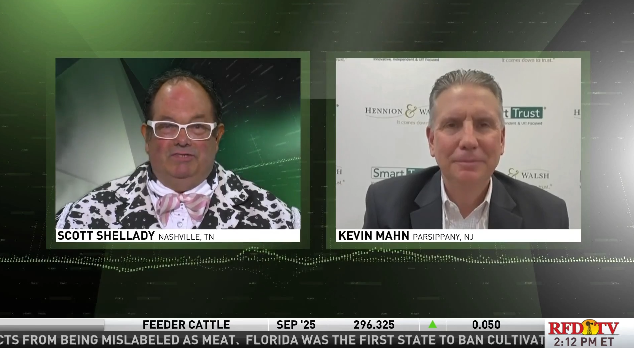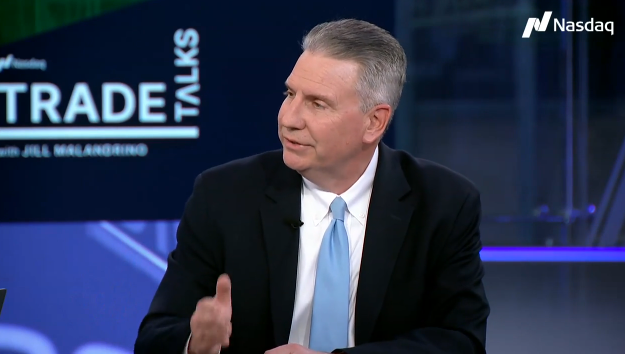
Updates on North Korea, Iran, and Inflation Push Markets Higher
Market Overview

Sources: Sources for data in tables: Equity Market and Fixed Income returns are from JP Morgan as of 05/11/18. Rates and Economic Calendar Data from Bloomberg as of 05/15/18. International developed markets measured by the MSCI EAFE Index, emerging markets measured by the MSCI EM Index. Sector performance is measured using GICS methodology.
Happening Now
Last week global equity markets finally displayed some of the vigor investors grew accustomed to early in 2018, resulting in one of the best performing weeks of the year. Almost all equity indices returned substantial gains for the week, primarily on the back of a lower than expected inflation reading, the U.S. withdrawal from the 2015 Iran nuclear agreement, and news of a scheduled meeting between North Korean leader Kim Jong-Un and United States President Donald Trump.
Over the past week the S&P 500 index gained 2.49%, while the Russell Midcap gained 2.65% and the Russell 2000 Index, a measure of the Nation’s smallest publically traded firms, gained 2.65%. On the international front, developed markets added 1.60% last week while emerging markets added 2.52%. Fixed income markets took a fairly tranquil stance throughout the week, as the yield on the 10 year US Treasury settled at 2.97%, which represents a rather insignificant increase from the 2.95% mark we saw a week prior. The U.S. Dollar followed suit and declined by 0.20%.
As previously mentioned, there were a few major catalysts that propelled markets higher over the past week. However the one that was the most impactful to investors in our opinion was the lower than expected reading observed on the Consumer Price Index, Producer Price Index, and Import Price report. A combination of these three metrics is used to gauge the overall level of inflation present in the economy. The Federal Reserve has continually stated that certain key mandates must be met before they’ll comfortably increase the pace at which the federal funds target rate is increased. Inflation is one of those key mandates. In short, the lower than targeted inflation number signals that the Federal Reserve will likely maintain historically low benchmark interest rates for longer.
Although this week was largely dominated by positive headlines, continued upside surprises in corporate earnings, and a negative real Federal Funds rate (a condition when the federal funds target rate is below that of the inflation rate) supportive of potential, continued growth in equity markets, downside risks remain ever-present. With that said, portfolio diversification becomes increasingly important in times of heightened uncertainty, and we encourage investors to revisit the diversification that may, or may not, be in place within their existing portfolios.
Important Information and Disclaimers
Disclosures: Hennion & Walsh is the sponsor of SmartTrust® Unit Investment Trusts (UITs). For more information on SmartTrust® UITs, please visit www.smarttrustuit.com. The overview above is for informational purposes and is not an offer to sell or a solicitation of an offer to buy any SmartTrust® UITs. Investors should consider the Trust’s investment objective, risks, charges and expenses carefully before investing. The prospectus contains this and other information relevant to an investment in the Trust and investors should read the prospectus carefully before they invest.
Investing in foreign securities presents certain risks not associated with domestic investments, such as currency fluctuation, political and economic instability, and different accounting standards. This may result in greater share price volatility. These risks are heightened in emerging markets.
There are special risks associated with an investment in real estate, including credit risk, interest rate fluctuations and the impact of varied economic conditions. Distributions from REIT investments are taxed at the owner’s tax bracket.
The prices of small company and mid cap stocks are generally more volatile than large company stocks. They often involve higher risks because smaller companies may lack the management expertise, financial resources, product diversification and competitive strengths to endure adverse economic conditions.
Investing in commodities is not suitable for all investors. Exposure to the commodities markets may subject an investment to greater share price volatility than an investment in traditional equity or debt securities. Investments in commodities may be affected by changes in overall market movements, commodity index volatility, changes in interest rates or factors affecting a particular industry or commodity.
Products that invest in commodities may employ more complex strategies which may expose investors to additional risks.
Investing in fixed income securities involves certain risks such as market risk if sold prior to maturity and credit risk especially if investing in high yield bonds, which have lower ratings and are subject to greater volatility. All fixed income investments may be worth less than original cost upon redemption or maturity. Bond Prices fluctuate inversely to changes in interest rates. Therefore, a general rise in interest rates can result in the decline of the value of your investment.
Definitions
MSCI- EAFE: The Morgan Stanley Capital International Europe, Australasia and Far East Index, a free float-adjusted market capitalization index that is designed to measure developed-market equity performance, excluding the United States and Canada.
MSCI-Emerging Markets: The Morgan Stanley Capital International Emerging Market Index, is a free float-adjusted market capitalization index that is designed to measure the performance of global emerging markets of about 25 emerging economies.
Russell 3000: The Russell 3000 measures the performance of the 3000 largest US companies based on total market capitalization and represents about 98% of the investible US Equity market.
ML BOFA US Corp Mstr [Merill Lynch US Corporate Master]: The Merrill Lynch Corporate Master Market Index is a statistical composite tracking the performance of the entire US corporate bond market over time.
ML Muni Master [Merill Lynch US Corporate Master]: The Merrill Lynch Municipal Bond Master Index is a broad measure of the municipal fixed income market.
Investors cannot directly purchase any index.
LIBOR, London Interbank Offered Rate, is the rate of interest at which banks offer to lend money to one another in the wholesale money markets in London.
The Dow Jones Industrial Average is an unweighted index of 30 “blue-chip” industrial U.S. stocks.
The S&P Midcap 400 Index is a capitalization-weighted index measuring the performance of the mid-range sector of the U.S. stock market, and represents approximately 7% of the total market value of U.S. equities. Companies in the Index fall between S&P 500 Index and the S&P SmallCap 600 Index in size: between $1-4 billion.
DJ Equity REIT Index represents all publicly traded real estate investment trusts in the Dow Jones U.S. stock universe classified as Equity REITs according to the S&P Dow Jones Indices REIT Industry Classification Hierarchy. These companies are REITs that primarily own and operate income-producing real estate.



